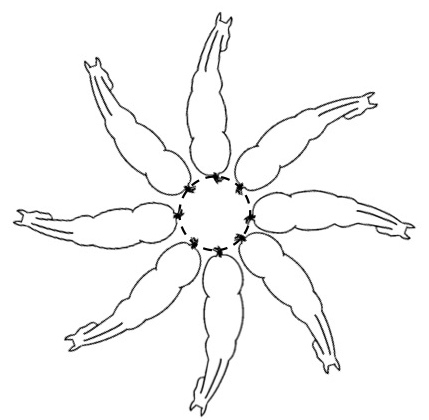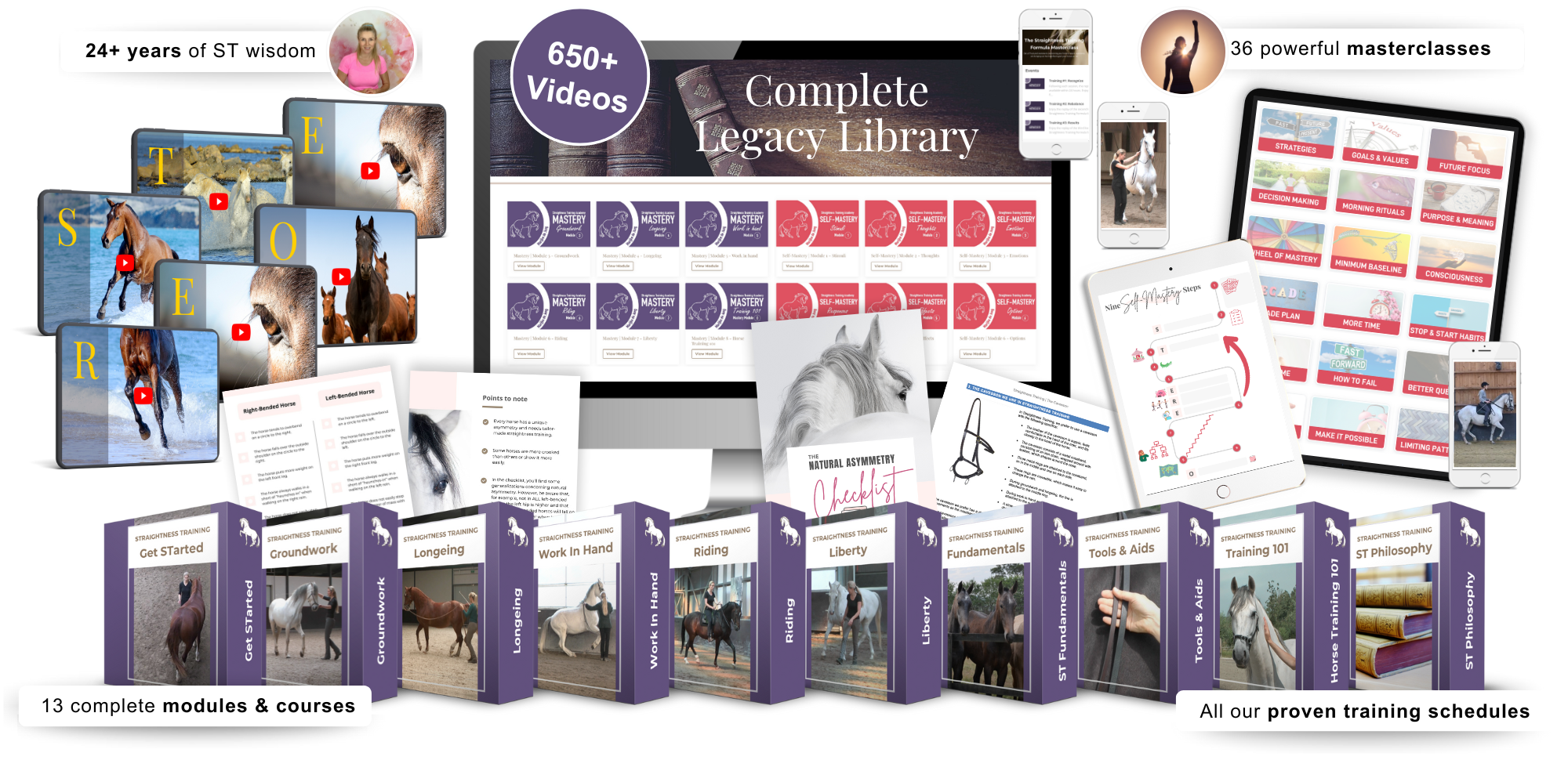
Pirouette
The pirouette is an important exercise to collect your horse in canter.
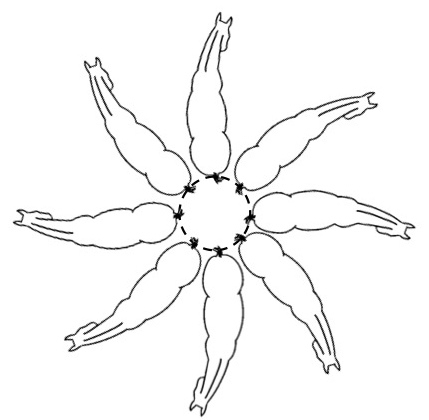
The long term goal of Straightness Training is achieving flexibility, gaining strength, build muscle and improving your horse’s overall health and maintaining it for a lifetime. This goal is achieved through a logical system of progressive exercises.
The pirouette is part of this system and you could also view this exercise as the smallest possible circle in haunches-in.
Definition
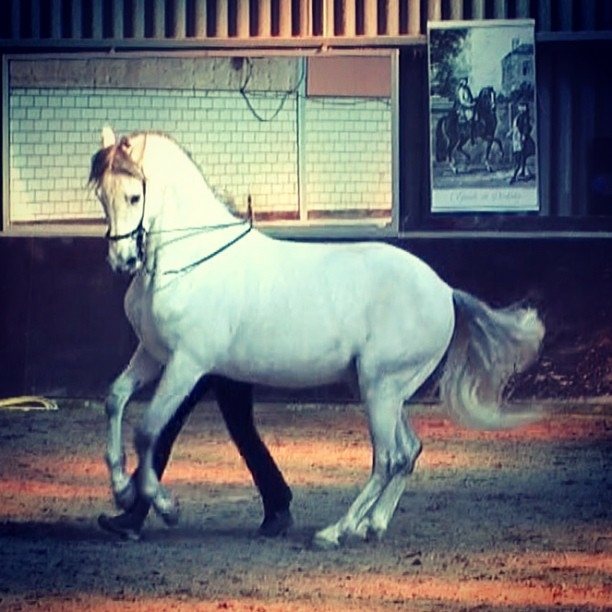
In the pirouette the hind legs stay in the center of the circle and the shoulders make a larger circle. This way the pirouette is a turn around the hindquarter.
At the beginning, when the exercise is performed on a bigger circle, it is called a working-pirouette.
In the pirouette, the horse remains equally bended through the body from head to tail during this exercise. The bending is in the direction of the movement.
The hind legs move over a smaller surface than the front legs. This makes the hind legs bend more and enables the horse to collect. The pirouette can be ridden in walk, trot, canter and piaffe. There are ¼, ½ and complete pirouettes.
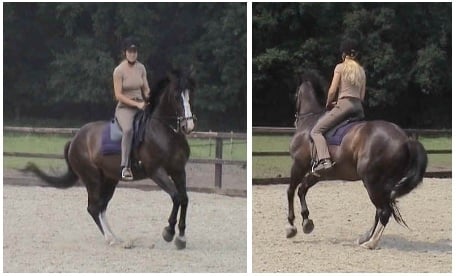
History
The pirouette was used in the times of man-to-man fights to make the horse turn on the place. This way, the rider could prevent being attacked from behind by staying face-to-face with his opponent. Mastering pirouettes was therefore important to survive in battle. In the baroque period, riding became an art and the skills of horse and rider were demonstrated in the pirouette.
Teaching the exercise to the horse
The pirouette is first taught in hand, and then in riding. At the beginning, when the exercise is performed on a bigger circle, it is called a ‘working pirouette’ . The exercise can be done in walk, trot and finally also in collected canter.
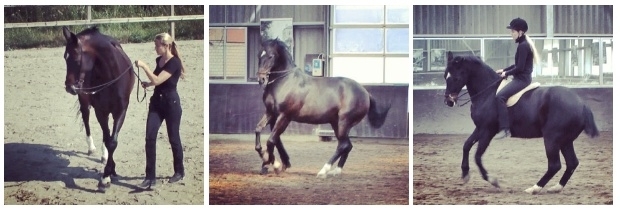
Developing the canter pirouette
1. Make a circle smaller in haunches-in

Ride haunches-in on a circle and make this circle smaller. In this exercise, it will become very clear when the strength and the mental limits of the horse are reached.
The circle should not be made smaller than the horse can do. When the horse can canter controlled and collected it can be asked to make the circle smaller in haunches-in.
At first just ask a few steps, reward the horse and make the circle bigger again.
2. Carré in haunches-in with ¼ pirouettes
A carré is a square circle on two tracks. The rider rides haunches-in and in every corner of the square he makes ¼ pirouette (90° turn). In total, the rider rides 4 time ¼ pirouettes, making a full pirouette in 4 phases. First practice in walk and then in collected canter.
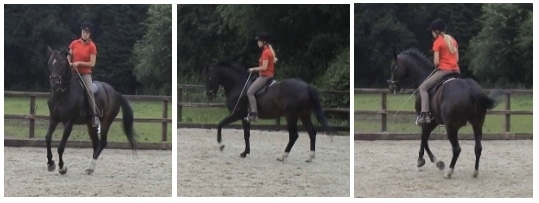
3. Turn in walk
A turn is a 180° turn around the hindquarter in walk along the wall and is also called a half walk pirouette. It is important that the rider decides the number of steps and not the horse. It is also important to keep the lateral bending.
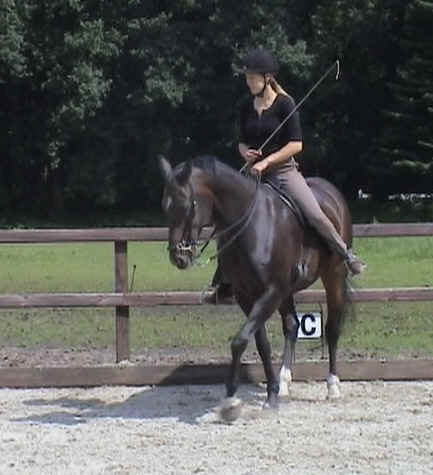
4. Half-pass with half a pirouette
When the horse has learned to do the half-pass in canter on both leads correctly, then the strength in his hindquarter will be developed enough and the horse will be capable to do ½ pirouettes during the half-pass.
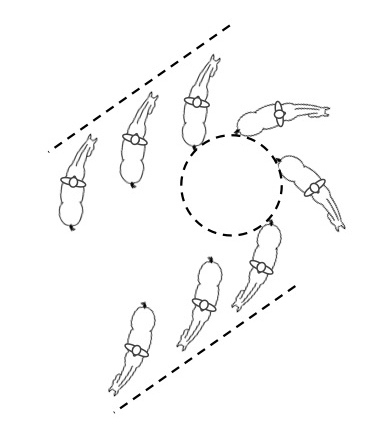
5. Full pirouette
When the horse is able to do ¼ and ½ pirouettes properly, the pirouette can be expanded to ¾ pirouettes and finally the horse will both physically and mentally be able to o a full 360° turn.
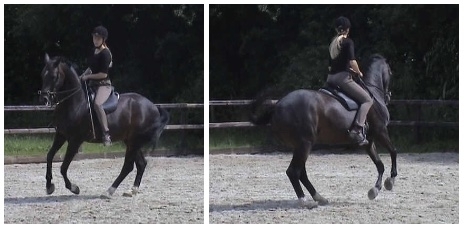
Variations
The canter pirouette is done in two, three, four or eight canter jumps. The pirouette in straightness training is done in eight jumps that correspond to the eight geometrical directions of the riding arena.
